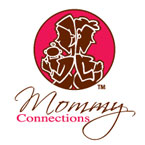Top parenting stories this week
Getting Rid of Varicose Veins
How to deal with one of the most maligned side effects of pregnancy
by: Sydney Loney
Varicose Veins
- Pregnancy puts extra pressure on your veins, which can lead to varicose veins.
- The more children you have, the greater your risk of developing varicose and spider veins.
- Staying active and maintaining a healthy weight can help prevent veins from getting worse.
- Out-patient laser treatments have replaced surgery as the most effective way to get rid of varicose veins.
P
regnancy comes with many perks (lustrous hair, glowing skin, new baby!), but there are a few side effects most women could do without. If you dread short season because of the post-pregnancy varicose and spider veins snaking up your legs, here’s what you should know.Why pregnancy causes varicose veins
During pregnancy, all the extra blood in your body enlarges your veins while your growing uterus (which balloons from a couple of ounces to about two pounds) also puts extra pressure on veins.
Varicose veins are caused by leaky valves inside your veins, says Dr. Sanjoy Kundu, founder of the Vein Institute of Toronto. “Blood flows back through the veins and pools, causing the veins to swell.”
Varicose veins are usually enlarged and swollen so that they bulge above the surface of the skin. They can be red, blue or flesh-coloured and are often painful – they may throb, ache or feel hot or itchy. (Varicose veins can also crop up in your vagina and rectum – hemorrhoids are actually varicose veins.)
Spider veins are like varicose veins, but appear smaller and closer to the surface of the skin, says Dr. Kundu. Usually red or blue, they resemble spider webs (hence the name).





